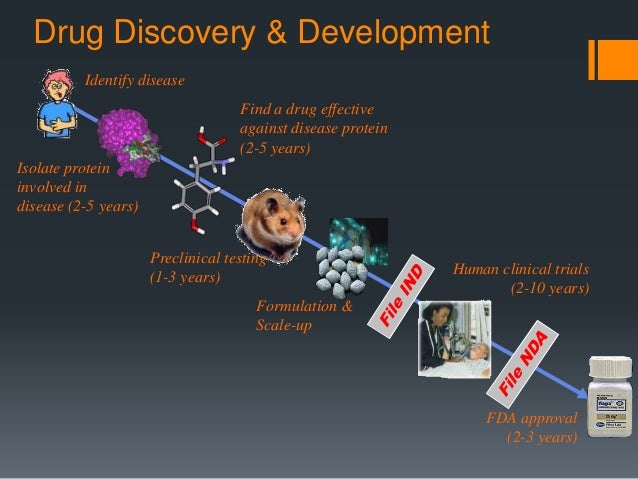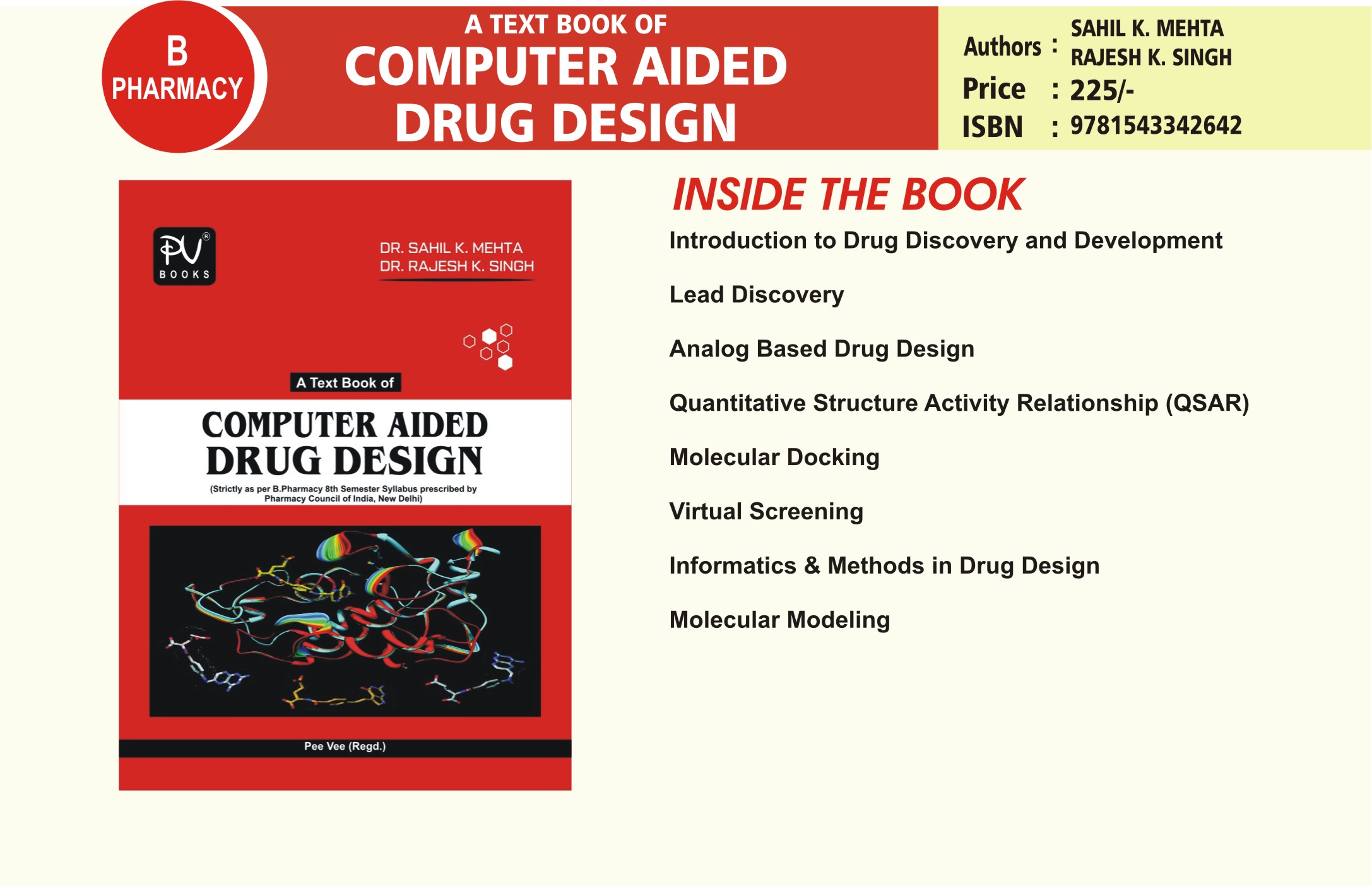Table Of Content

These methods, including MolPal25, Active Learning110 and DeepDocking111, report as much as 14–100 reduction in the computational cost for libraries of 1.4 billion compounds, although it is not clear how they would scale to rapidly growing chemical spaces. In virtual screening approaches, a synergetic use of physics-based docking with data-based scoring functions may be highly beneficial. Moreover, if the physics-based and data-based scoring functions are relatively independent and both generate enrichment in the selected focused libraries, their combination can reduce the false-positive rates and improve the quality of the hits.
Meet the UC Campus Leads
Both ligand-based and structure-based drug design approaches have been widely used in the drug discovery process against coronavirus disease-19 (COVID-19), an infectious viral disease caused by SARS-CoV-2. To date, only a few drug-candidate molecules have undergone clinical trials, and these molecules are mostly repurposed approved drugs (Figure 2). With the ever-increasing demand for drugs, the selection of biologically active structures draws greater attention. The knowledge of structural biology and the power of computers has become possible to exploit the use of computational methods to identify active libraries to resolve the molecular obesity problem. Docking is a useful CADD tool to predict binding orientation of a ligand molecule within target binding site as well as to evaluate its binding strength (70). Traditional docking methods only consider rigid or limited protein flexibility and ignore or treat the contribution of desolvation to binding in an empirical way.
Unraveling the Genomic Landscape: An In-Depth Look at ChIP-seq Library Preparation and Data Analysis
Aurigene Pharmaceutical Services introduces AI and machine learning assisted drug discovery platform - BSI bureau
Aurigene Pharmaceutical Services introduces AI and machine learning assisted drug discovery platform.
Posted: Wed, 03 Apr 2024 07:00:00 GMT [source]
Knowledge of the relationship of these properties to activity (i.e. SAR) can be used by the medicinal chemist to qualitatively design new, synthetically-accessible compounds that can be quantitatively evaluated. When developing SAR using pharmacophore descriptors, the appropriate conformations of the compounds that are responsible for the biological activity must be used. Here we illustrate the development of SAR using our in-house developed conformationally sampled pharmacophore (CSP) protocol (94, 95).
Natural product-inspired strategies towards the discovery of novel bioactive molecules

While FEP and molecular mechanics (MM) with Poisson–Boltzmann (PB) and surface area solvation (MM/PBSA) as well as MM/generalized-Born SA (GBSA) methods (107) do account desolvation, these are computational demanding approaches that limits their utility in CADD. A novel method designed to overcome this drawback is the SILCS-MC (19) docking method put forward by our laboratory. This takes advantage of the use of GCMC/MD simulations of the protein in aqueous solution with selected organic solutes to precompute the GFE FragMaps that are free energy functional group affinity patterns that encompass the entire protein and account for protein flexibility and desolvation contributions (108–110). SILCS-MC then involves simply assigning the GFE value for the appropriate FragMap type to each atom in the molecule and summing those values to get the LGFE score. MC conformational sampling is then performed to allow the orientation and conformation of the ligands to relax in the field of the GFE FragMaps. This allows for SILCS-MC docking to be performed in a highly computationally efficient fashion while achieving a level of accuracy similar to highly expensive FEP methods (109).
Strengths and Challenges of CADD in COVID-19 Research
This review article provides useful insights into some of the common in silico methods used in CADD and how these methods have been currently used and can be of help in the drug discovery process of COVID-19. Molecular docking is a computational process widely used for rapidly predicting the binding modes and affinities of small molecules against their target molecules (usually proteins) [35, 36]. This in silico process has achieved a position of great importance in the drug discovery field [21, 36-38]. Molecular docking has emerged over the last two decades and is now considered an indispensable tool for CADD and in the structural biology field, and has been shown to be more efficient than traditional drug discovery methods.
8 Single-step Free Energy Perturbation (SSFEP)
Contributing to this is the steady rise of antibiotics drug resistance leading to the need for new antibiotics (1, 2). Toward the design of new antibiotics, computer-aided drug design (CADD) can be combined with wet-lab techniques to elucidate the mechanism of drug resistance, to search for new antibiotic targets and to design novel antibiotics for both known and new targets. Notably CADD methods can produce an atomic level structure-activity relationship (SAR) used to facilitate the drug design process thereby minimizing time and costs (3, 4). This powerful physical technique is used to predict the positions of each atom in a molecular system with respect to time which is based on Newton's laws of motions governing interatomic interactions [56]. The forces between interacting atoms are estimated using a suitable force field which is used to determine the overall energy of the system [57].
Computational approaches streamlining drug discovery
The simulation results provide clues for the design of new membrane disruptors to treat mcr-1 infections. The development of broadly generalizable or even universal models is the key aspiration of AI-driven drug discovery. One of the directions here is to extract general models of binding affinities (binding score functions) from data on both known ligand activities and corresponding protein–ligand 3D structures, for example, collected in the PDBbind database81 or obtained from docking. Such models explore various approaches to represent the data and network architectures, including spatial graph-convolutional models82,83, 3D deep convolutional neural networks84,85 or their combinations86.
What happens to the research data of drug molecules that stop at pre-clinical stage?
Computer-Aided Drug Design (CADD) strategies have become indispensable tools in modern drug discovery and development. Besides academia, large and small-sized pharmaceutical and biotechnology companies have been using intelligent software to assist in the discovery or optimization of bioactive compounds. This includes, but is not limited to, Aliskiren, Boceprevir, Captopril, Dorzolamide, Nolatrexed, Oseltamivir, Rupintrivir, Saquinavir and Zanamivir [2].

1. Preparation of the Target Structure
For examples, Trylska et al. studied the effects of mutations at the bacterial ribosomal A-site using molecular dynamics (MD) simulations to reveal the origins of bacterial resistance to aminoglycosidic antibiotics (5). He has contributed to the development of a number of technologies in this area, including the creation and maintenance of BindingDB, the first publicly accessible database of protein-small molecule binding data. Dr. Gilson is currently on the faculty of UC San Diego’s Skaggs School of Pharmacy and Pharmaceutical Sciences. The most reliable and accurate region in the 3D structure in the protein-ligand complex is the analysis and prediction of the region in a protein where ligand can occupy its best pose.
Computational approaches streamlining drug discovery - Nature.com
Computational approaches streamlining drug discovery.
Posted: Wed, 26 Apr 2023 07:00:00 GMT [source]
The structural elucidation of pharmacological targets of SARS-CoV-2 has helped the researchers in the structure-based virtual identification of inhibitors, and the discovery of few lead molecules against COVID-19 has led to the use of scaffolds that can be optimized through ligand-based drug design. Realizing the possible mutability of this RNA virus and the emergence of drug resistance problems, it is, therefore, necessary to take a step further and consider targeting multiple drug targets that will be more effective and might help in overcoming drug resistance barriers. This book provides up-to-date information on bioinformatics tools for the discovery and development of new drug molecules. It discusses a range of computational applications, including three-dimensional modeling of protein structures, protein-ligand docking, and molecular dynamics simulation of protein-ligand complexes for identifying desirable drug candidates.
In order to achieve this, molecular docking tools are used to generate a set of different ligand binding poses and a scoring function is used to estimate the binding affinities of generated poses to identify the best binding mode. The energy change caused by ligand/receptor complex formation, is given by the Gibbs free energy (ΔG) and the binding constant (Kd) [49, 50]. The binding energy of a complex is predicted by evaluating physicochemical features involved in ligand-receptor binding, which include desolvation, intermolecular interactions, and entropic effects [51]. Sehgal et al. identified a number of compounds active against HSPB8 based on molecular docking results [52].

No comments:
Post a Comment